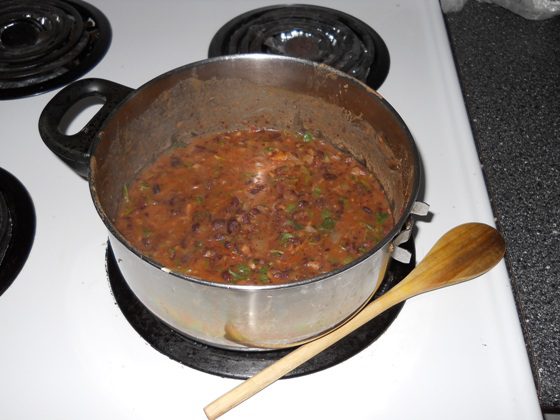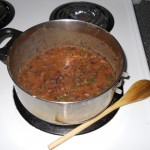I’m now back in Vancouver after 3 months in Mozambique, and wondering how to describe it. It was both a varied and wonderful, frustrating and surprising experience. Note how I made for the Southern Hemisphere, where it was still summer, during the rainiest, chilliest and dreariest months in Vancouver. I’m still patting myself on the back for arranging to skip the winter. Ingenious, wasn’t it?
I’m sure you’re all imagining a sunny, beachy, coconut-filled paradise. And you wouldn’t be wrong. Mozambique is on the Southeastern Coast of Africa, and full of natural beauty. In the coastal capital of Maputo, the vistas knocked the breath out of me nearly every day.
Sadly, due to a rise in kidnappings close to home, I was not permitted to explore the Maputo on foot as much as I would have liked for security reasons. Instead I spent a lot of time at home getting to know the housekeepers, learning Portugese and having Monica, the cook, teach me how to make Portugese-Mozambican style dishes. So even though I spent a lot of time indoors, I got to practice my Portugese and learn how to cook local meals. Sounds like a win right?
Tonight I tried one of the recipes Monica taught me. It’s a recipe for Portugese-African bean stew called “Feijao” (pronounced fay-szao, with a little nazalasation at the end). Feijao com arroz (beans and rice) is a staple local meal in Mozambique — much like it is in Brazil, which was also once a Portugese colony. The phrase Arroz e feijao is probably like our “peanut butter & jelly” in that it is much loved, goes well together, and is a cornerstone of daily dining. Most Mozambicans eat it every day. It’s a not-to-be-messed-with classic.
(For those interested in international variations, there’s a YouTube Channel dedicated entirely to Rice-and-Bean recipes).
This is a magically delicious meal. The ingredients are so simple, and the result so delicious, that magic is the only explanation.

Here is what you’ll need to make Feijao:
- 2 cups cooked beans (any beans will do — I used kidney beans today, but my favourite are black beans)
- 1 medium-sized onion, finely chopped
- 3 large crushed garlic cloves
- 1 tablespoon grated or finely chopped ginger
- 1 bay leaf
- 1-2 of the hottest little chillies you can find (ideally the red piri piri, but green chilies work fine)
- 2 cups hot water*
- salt to taste
- 0.5 tsp turmeric powder
- asafoetida powder (optional)
- 1.5 tablespoons olive oil
- Juice of lime (optional)
- A big handful of finely chopped parsely
*Note: You can amp up the flavour of this recipe by using the salted hot water that you cooked the beans in instead of draining the beans and adding new hot water to the pot.
Heat the olive oil in the pot, and add in the bay leaf and chopped chilies. If you’re chillies are exta hot like piri piri, or you want to keep the dish mild, slice the chillies down the middle instead of chopping them so you can pull them out of the stew before you eat it.
Next, add in the chopped onion and stir it around. Let it cook for a few minutes. When some of the onions start becoming golden-brown around the edges, toss in the garlic and ginger and mix it in.
When the ginger and garlic start to brown a little, throw in the chopped tomatoes and stir. Let this mixture cook for about 3 minutes. Add in the salt and turmeric.
Mush the mixture together with the flat of your spatula so that all the little pieces of onion and tomato are making friends. Let no onion sliver remain aloof from its peers. When the mixture starts to resemble a thick sauce, it’s time to add the beans, along with 2 cups of hot water or the warm water they were cooked in. Lower the heat of the stove and let it simmer.
Stand by the pot to stir the beans sporadically, making sure they don’t sink to the bottom of the pot to stick. Let it simmer for 15-20 minutes. You can simmer it for more or less, depending on how thick you want your stew. Turn off the heat and stir in the parsley. Squeeze in a lime if you like, and you’re done.
Enjoy your Feijao, and don’t forget the arroz.
I leave you with this inexplicably delightful piece of videotaped television featuring arroz e feijao!





I envy you so much, Emme. What a great trip. And I would love to learn Portuguese while learning how to cook these dishes. And it’s gluten-free!
Ah, I see this post is by Alyzee. My envy is thusly transferred to Alyzee.
Hi Christopher, your comment was hilarious. Thanks for reading!
Feijao looks and sounds delicious. Yes, I do picture Mozambique to be a sunny paradise. Sorry that it wasn’t safe for you to get out and about too much, but you made the best of it. Did you feel like you were in danger at any time while there?
Thanks Cathy. To be honest, because there was a lot of kidnappings in the news, there was a general sense of fear on the rare occasion that I did step out. But due to some (probably inappropriate) sense of “nothing will ever happen to me” I wasn’t really so afraid. I did have a really relaxing time there and the sunny weather and warmth was the best part. More posts about Mozambique to come 🙂
Mozambique sounds like a terrific place to visit. Feijao looks delicious too and I’ll be sure to add arroz if I have some.
It looks delicious !! But there are more ingredients, I think. Anyway, It will be so tasty and I want to try it out once for testing later.
This recipe cooking is very impressive, and it tastes delicious when eating.
Wow!! Seems unique dish and tasty. Thank you for sharing this delicious food recipe.
Feijao is interesting dish thank u i wil try to prepare this one
I’m going to cook Feijao.. Thanks for sharing this delicious food recipe.
I love spicy foods, and since one of the ingredients is the spiciest chili then I will surely like this recipe. I will be cooking this at home and check out if my husband will like it.